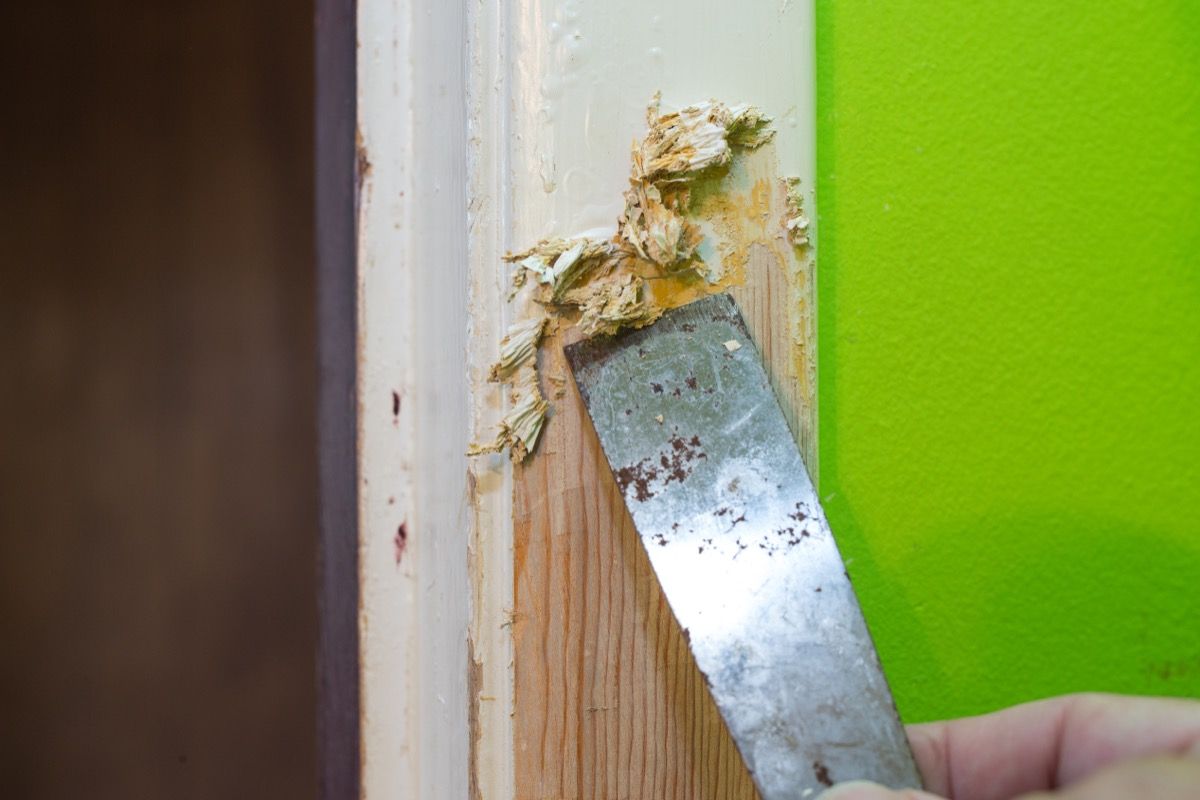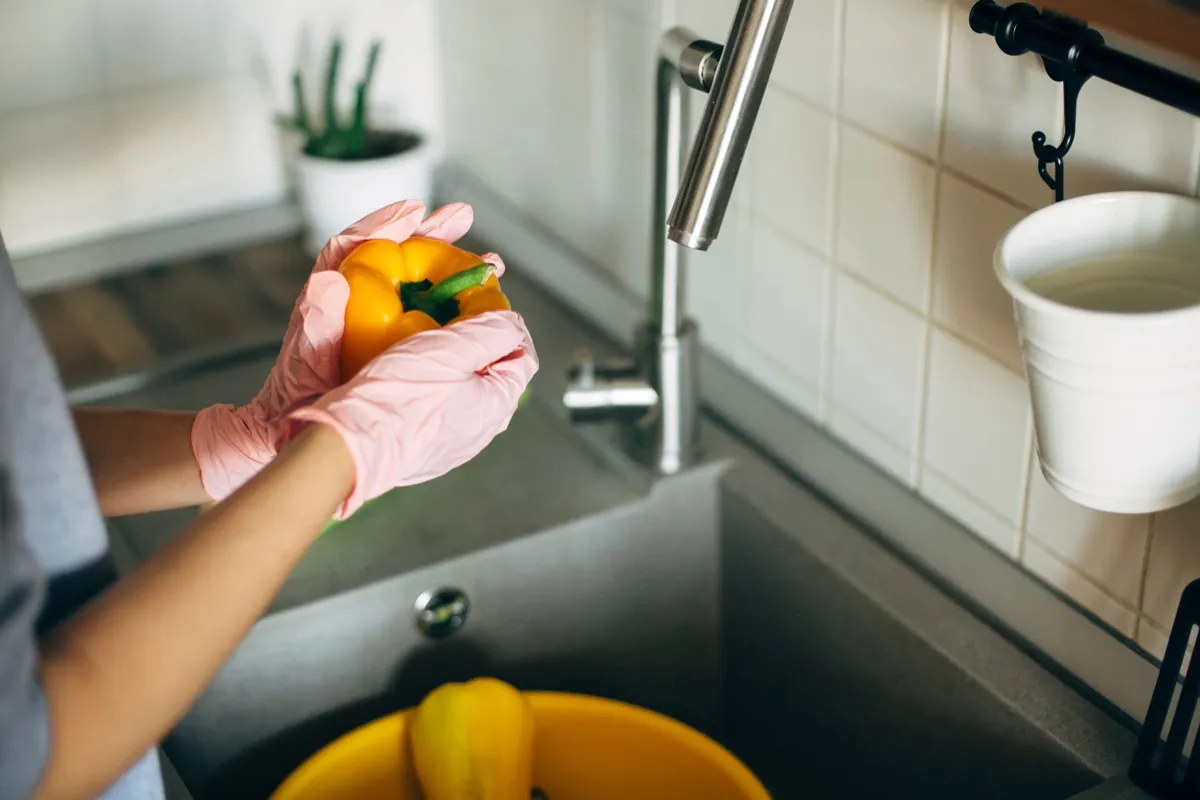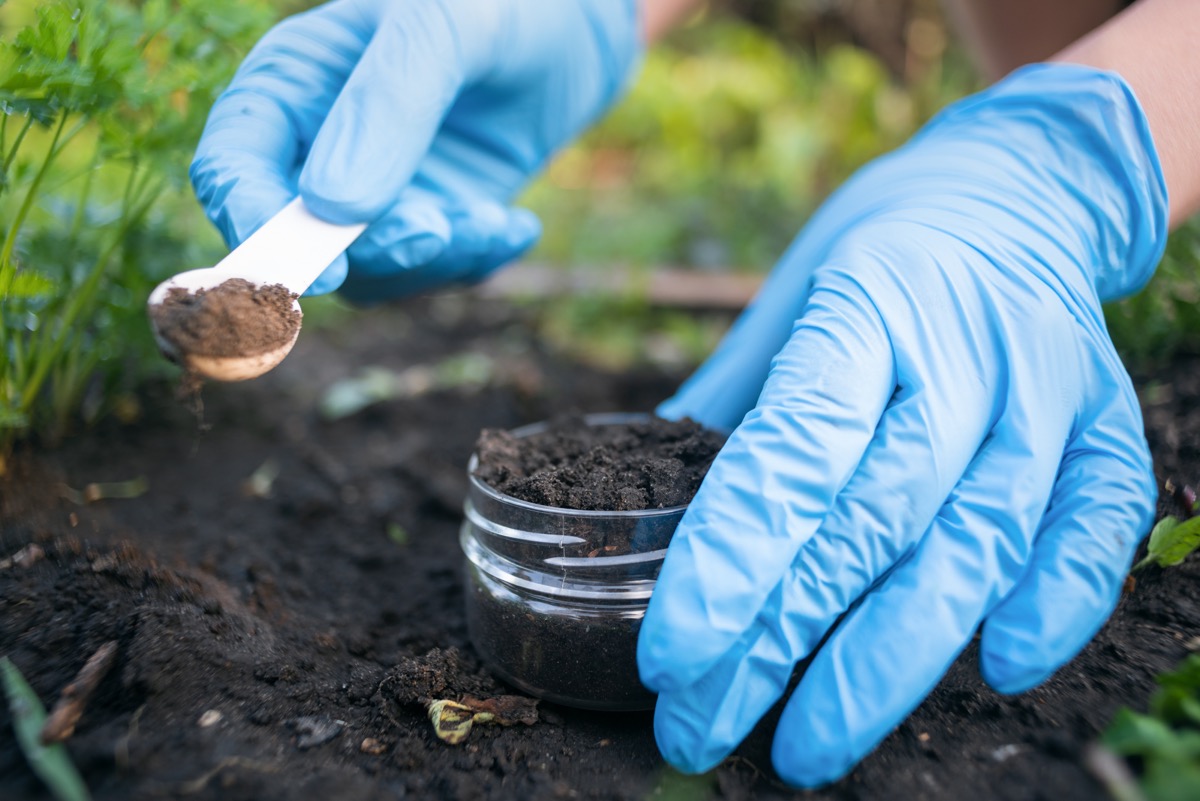RELATED: Never Go in a Lake If You See This One Thing, Local Officials Warn. Lead, which was commonly used in house paints in the U.S. until it was banned in 1978, can cause your garden to become unsafe, especially if un-encapsulated lead-based paint is located in areas of your home that are subject to friction, like doorways and windows. “Whether inhaled in the garden or in the home, lead dust is dangerous as it accumulates in the body,” cautions Thomas Jepsen, CEO of Check4Lead. “If a house is doing a remodel without the necessary renovation, repair, and painting (RRP) measures, like not dry sanding the lead-affected surface, the dust will go all over the place and pose a threat. Children are unfortunately the most vulnerable, but no one should be exposed to lead dust.” While it’s not possible to tell if paint is lead-based from appearance alone, if you have a home built before 1978—especially if you notice peeling or flaking paint—it’s important to err on the side of caution and operate under the assumption that there may be soil contamination in the surrounding area, according to the Environmental Protection Agency (EPA). Lead exposure is so damaging that the Centers for Disease Control and Prevention (CDC) caution that there is no level of lead exposure in children that’s been deemed safe.ae0fcc31ae342fd3a1346ebb1f342fcb Exposure to lead paint or lead dust through inhalation or consumption can cause brain damage, slowed growth, developmental delays, behavioral issues, learning problems, hearing issues, and speech delays, among other potentially lifelong consequences, the CDC reports. Among adults, lead poisoning can cause muscle and joint pain, headaches, high blood pressure, mood disorders, reproductive issues, memory and concentration issues, and abdominal pain, among other serious issues, according to the Mayo Clinic. For the latest health and safety news delivered straight to your inbox, sign up for our daily newsletter! According to a 2016 study conducted by researchers at the University of Washington (UW) and published in the Journal of Environmental Quality, aside from root vegetables including beets, carrots, radishes, and turnips, most plants grown in lead-contaminated soil harbor very little lead in their edible flesh. However, improper washing of food grown in lead-contaminated soil can lead to the inadvertent consumption of lead dust, which may remain on the surface of those vegetables and fruits. If your soil may be contaminated, the University of Washington researchers recommend thoroughly washing any fruits or vegetables before consuming them and washing your hands after gardening and before meals. One of the easiest ways to mitigate any accidental lead ingestion is to have your soil tested before you plant anything in it—regardless of your home’s age. “Even if you’re not living in an old home yourself, your neighbor’s home could have lead in its exterior paint,” which can make its way into your garden, says Jepsen. If you want to lower your exposure risk, the University of Washington researchers recommend using raised beds filled with fresh lead-tested soil and compost instead of growing food directly in the dirt surrounding your home. RELATED: Stop Washing This Every Time You Shower, Doctors Say.



